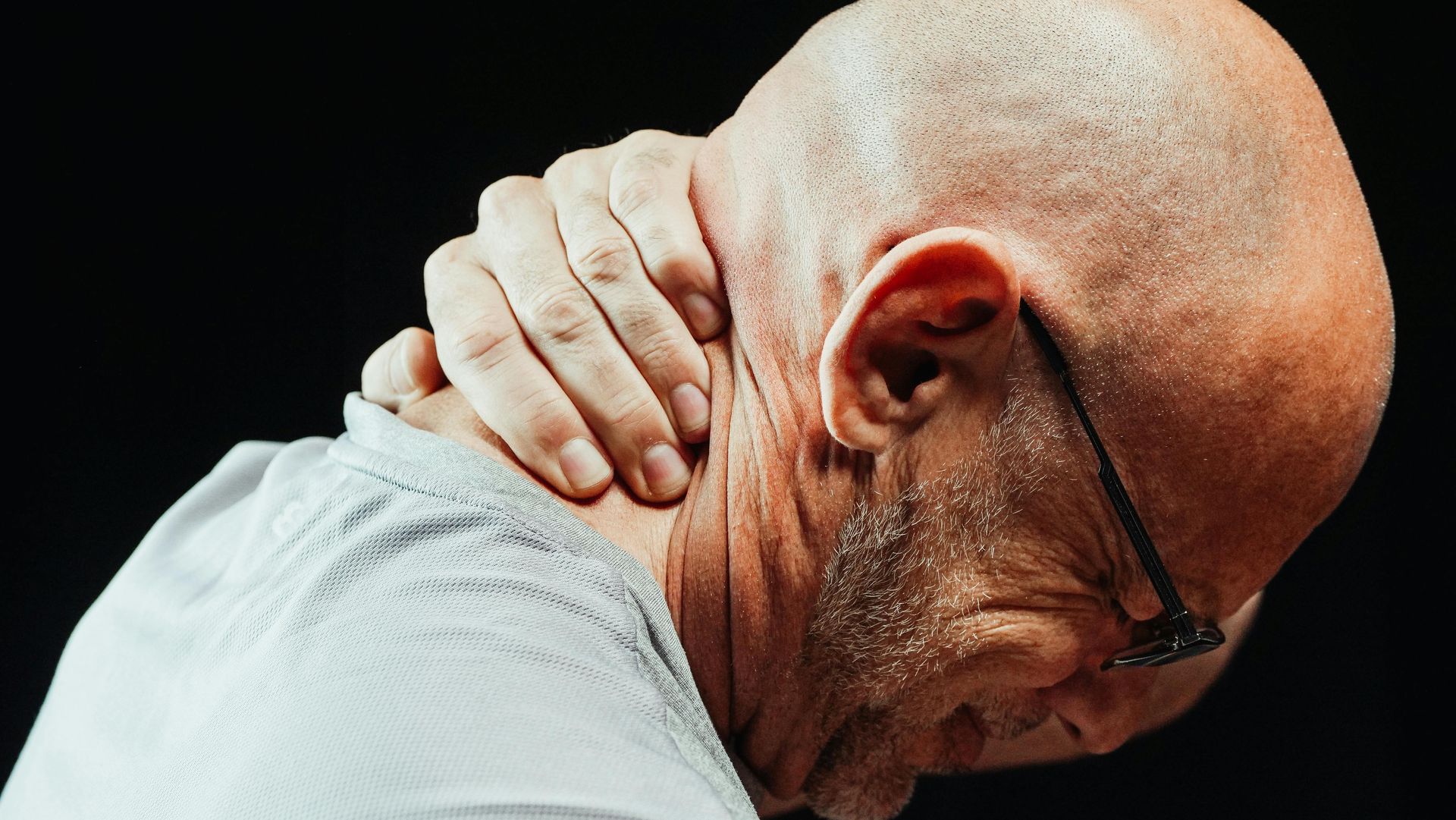Blog

May 9, 2025
Chronic pain is a reality for millions of Americans, impacting daily activities, sleep, and overall quality of life. As awareness grows about the potential side effects and risks associated with certain conventional treatments, many individuals are seeking alternative or complementary options for managing discomfort. At Chronic Care of Richmond, we aim to empower patients with knowledge about safe and effective pain relief strategies. Among these, natural remedies such as herbal supplements, dietary changes, and essential oils are gaining significant attention. But how effective are these approaches, and what does the science say? Herbal Supplements: Nature’s Support for Pain Relief Herbal medicine has a long history of use in various cultures for managing pain and inflammation. One of the most widely researched herbal supplements is turmeric, particularly its active compound curcumin. Curcumin has demonstrated notable anti-inflammatory and antioxidant properties in several clinical studies. According to a systematic review published in the Journal of Medicinal Food , curcumin supplementation can significantly reduce symptoms of pain in patients with osteoarthritis compared to placebo. Similarly, ginger, another potent anti-inflammatory herb, has been shown to reduce muscle pain after exercise and ease symptoms of osteoarthritis in randomized controlled trials. Another popular herbal remedy, willow bark, contains salicin—a precursor to aspirin. While studies suggest that willow bark may modestly reduce lower back pain and osteoarthritis symptoms, it’s essential to consult with a healthcare professional before use to avoid potential interactions or side effects, especially for those with certain medical conditions. It’s important to emphasize that while some herbal supplements can support pain relief, they should not replace prescribed treatments without medical guidance. Quality, dosage, and individual health needs play a significant role in their safety and effectiveness. Dietary Changes: Reducing Inflammation from the Inside Out What we eat can have a profound effect on our body’s inflammation levels and, consequently, pain perception. Diets rich in fruits, vegetables, whole grains, and healthy fats—such as the Mediterranean diet—are associated with lower levels of chronic inflammation. According to the Harvard T.H. Chan School of Public Health , an anti-inflammatory diet may help manage symptoms of chronic pain conditions like rheumatoid arthritis and fibromyalgia. Omega-3 fatty acids, found in fatty fish like salmon, walnuts, and flaxseeds, are especially beneficial. Research published in PAIN found that increased omega-3 intake can help reduce joint pain and stiffness in individuals with rheumatoid arthritis. Additionally, limiting processed foods, refined sugars, and saturated fats can help minimize inflammation and support overall health. For personalized nutrition plans that support pain management, consulting with a registered dietitian or integrative health professional is recommended. Chronic Care of Richmond offers services for patients seeking to optimize their diet for pain relief and improved wellness. Essential Oils: Aromatherapy and Topical Relief Essential oils, concentrated extracts from plants, are widely used in aromatherapy and topical applications for pain relief. Lavender oil, for example, is known for its calming properties and has demonstrated efficacy in reducing headache and migraine symptoms when inhaled or applied to the skin. A 2012 clinical study in Evidence-Based Complementary and Alternative Medicine found that inhaling lavender essential oil significantly reduced migraine severity in participants compared to placebo. Peppermint oil is another popular remedy, particularly for tension headaches and muscle pain. Its active ingredient, menthol, creates a cooling sensation that may help ease discomfort when massaged into the skin. While essential oils can offer supportive benefits, they should always be used with caution. Some oils may cause skin irritation or allergic reactions, and not all are safe for internal use. Diluting essential oils in a carrier oil and performing a patch test before widespread application is recommended. Integrative Approaches: Combining Remedies for Optimal Results Many patients find the greatest relief through a combination of natural remedies and conventional treatments. Integrative care—blending evidence-based complementary therapies with traditional medical approaches—can enhance outcomes and address pain from multiple angles. For example, herbal supplements may be used alongside physical therapy, while dietary changes and essential oils can complement medications prescribed by a healthcare provider. A holistic approach also considers lifestyle factors such as stress management, exercise, and sleep quality, all of which influence pain perception. Practices like yoga, mindfulness meditation, and acupuncture are increasingly recognized for their role in pain management and can be tailored to individual needs. Evaluating the Evidence: What Science and Experts Say While many natural remedies show promise, it’s essential to evaluate their effectiveness based on scientific evidence and expert opinion. Some supplements and dietary strategies have robust research backing, while others require further study. The National Center for Complementary and Integrative Health (NCCIH) advises caution, noting that “natural” does not always mean “safe,” and interactions with medications are possible. Always consult with a qualified healthcare provider before adding new supplements or making significant dietary changes, especially if you have underlying health conditions or are taking other medications. For more information on integrative pain management, visit our Pain Management Solutions page. The Role of Professional Guidance in Natural Pain Relief Choosing the right natural remedies for pain relief is not a one-size-fits-all process. Factors like the type and source of pain, existing health conditions, and personal preferences must be considered. At Chronic Care of Richmond, our team is committed to providing individualized care that integrates natural remedies with conventional therapies for safe and effective pain management. Our approach prioritizes patient education, evidence-based recommendations, and ongoing support throughout your journey to better health. By staying informed and working closely with healthcare professionals, individuals can explore these options with confidence and find the combination of strategies that works best for their unique needs. If you’re interested in learning more about natural approaches to pain relief or want to schedule a consultation with our experienced team, contact Chronic Care of Richmond today. We’re here to help you discover safe, effective, and holistic solutions for lasting pain relief.

May 2, 2025
Living with chronic pain is a daily challenge that affects every aspect of life, from physical comfort to emotional well-being. At Chronic Care of Richmond, we recognize that effective pain management goes far beyond addressing physical symptoms alone. Increasing research highlights the profound relationship between the mind and body, revealing how our thoughts, emotions, and mental health can significantly influence our experience of pain. This understanding opens new doors to holistic pain relief strategies that empower individuals to take control of their health and improve their quality of life. The Mind-Body Connection The mind-body connection refers to the intricate link between our psychological state and physical health. Emotions like stress, anxiety, and depression can intensify the perception of pain . When the brain interprets signals from the body, it can either amplify or reduce the sensation of pain depending on mental and emotional factors. For example, chronic stress triggers the release of cortisol and other stress hormones, which can lead to increased muscle tension and inflammation—both of which can worsen pain conditions. Individuals dealing with chronic pain are more likely to experience mood disorders, and vice versa, underscoring the cyclical nature of the mind-body connection in pain management. Emotional Health Emotional health plays a crucial role in how we perceive and cope with pain. Feelings of sadness, frustration, or hopelessness can heighten pain sensitivity and make it harder to engage in daily activities. Conversely, positive emotions and strong social support can act as natural pain relievers, helping to reduce pain intensity and improve overall well-being. Chronic pain can lead to a " pain cycle ," where pain causes emotional distress, which in turn exacerbates the pain, creating a self-perpetuating loop. Breaking this cycle requires addressing both the mind and body, not just physical symptoms. Stress Relief Techniques Managing stress is a foundational aspect of holistic pain care. There are several evidence-based techniques that can help reduce stress levels and, in turn, alleviate pain. Mindfulness Meditation: Mindfulness practices encourage individuals to focus on the present moment without judgment. Mindfulness meditation can significantly reduce pain intensity and improve emotional regulation. Deep Breathing Exercises: Simple breathing techniques, such as diaphragmatic breathing, help activate the body’s relaxation response, lowering stress hormone levels and reducing muscle tension. Progressive Muscle Relaxation: This technique involves tensing and then slowly relaxing different muscle groups in the body. It can help individuals become more aware of physical tension and learn to release it, providing both physical and emotional relief. Incorporating these practices into a daily routine can make a meaningful difference in how individuals experience and manage chronic pain. For more self-care tips and strategies, visit our blog page . Cognitive Behavioral Strategies Cognitive Behavioral Therapy (CBT) is a well-researched psychological approach that helps individuals identify and change negative thought patterns and behaviors that contribute to pain and emotional distress. CBT techniques empower patients to reframe their thoughts about pain, develop healthier coping mechanisms, and improve their overall sense of control and well-being. CBT can lead to significant improvements in pain-related disability, mood, and quality of life for people with chronic pain conditions. By addressing both cognitive and behavioral factors, CBT is a powerful tool in the comprehensive management of chronic pain. Mental Health Counseling Mental health counseling plays a vital role in helping individuals navigate the emotional challenges of living with chronic pain. Professional counselors can provide support, teach coping skills, and guide patients through techniques such as relaxation training and stress management. Integrating mental health care into pain management plans has been shown to not only reduce pain intensity but also enhance daily functioning and emotional resilience. At Chronic Care of Richmond, we believe in a patient-centered approach that addresses the full spectrum of mind-body health. Our team works closely with patients to develop personalized care plans that include mental health support, stress reduction, and proven therapeutic techniques. Taking the Next Step Toward Holistic Pain Relief Understanding the mind-body connection is key to unlocking comprehensive, lasting relief from chronic pain. By incorporating stress management, cognitive behavioral strategies, and mental health counseling into your pain management plan, you can take charge of your health and improve your quality of life. If you’re ready to explore holistic and compassionate care for chronic pain, contact Chronic Care of Richmond today to schedule a consultation. For more information about our approach and the services we offer, visit our Services Page . Let us partner with you on the path to better health and well-being.

April 25, 2025
Living with chronic pain can feel overwhelming, but in Richmond, a wealth of community resources and educational opportunities are available to help patients take control of their health. At Chronic Care of Richmond , we believe that informed patients are empowered patients. This article explores how local workshops and seminars, events, and support groups can play a pivotal role in the journey toward better health outcomes, offering guidance, support, and the chance to connect with others facing similar challenges. The Power of Patient Education in Chronic Pain Management Patient education is the foundation of effective chronic pain management. Studies have shown that individuals who actively engage in learning about their conditions experience improved symptom control and a higher quality of life. By understanding the mechanisms behind chronic pain and learning evidence-based strategies for self-care, patients can reduce anxiety, make informed decisions, and become active participants in their treatment plans. Richmond is home to a variety of educational workshops designed to provide patients with practical knowledge and coping tools. These workshops often feature expert speakers, interactive sessions, and opportunities for attendees to ask questions specific to their experiences. Whether you are newly diagnosed or have been managing chronic pain for years, participating in these events can demystify complex medical topics and help you feel more in control. Local Workshops and Seminars: Learning Together, Growing Together In-person and virtual workshops and seminars are held throughout the Richmond area, covering topics such as nutrition, exercise, stress management, and alternative therapies for chronic pain. These events are typically open to all, regardless of where you receive your care, making them an inclusive option for anyone seeking support. One standout example is the Chronic Pain Self-Management Program offered by local community centers and health organizations. This evidence-based program, developed by Stanford University, has been shown to significantly improve pain-related outcomes, including physical activity and overall well-being. Participants learn techniques such as goal setting, problem-solving, and how to communicate more effectively with healthcare providers. Additionally, organizations like the Virginia Department of Health frequently partner with local hospitals and nonprofits to host educational seminars. Topics range from healthy lifestyle habits to the latest advances in non-invasive pain management. These events not only provide valuable information but also foster a sense of community and motivation. Support Groups: Building Connections and Resilience Support groups are another vital resource for those managing chronic pain. By connecting with others who share similar experiences, patients can reduce feelings of isolation, share coping strategies, and gain emotional support. According to the American Psychological Association , peer support can lead to improved mental health and increased resilience among people living with chronic conditions. Richmond boasts a diverse array of support groups tailored to different needs. Some meet weekly, while others gather monthly or quarterly. Many are led by trained facilitators who ensure a safe, respectful, and confidential environment. These groups often discuss topics such as pacing daily activities, setting realistic goals, and maintaining a positive outlook despite ongoing challenges. For those unable to attend in-person meetings, online forums and virtual support groups provide a flexible alternative. These platforms enable participants to connect from the comfort of their homes, expanding access to valuable peer support networks. Community Events: Staying Informed and Engaged Beyond workshops, seminars, and support groups, Richmond’s community events calendar is filled with opportunities for patients and caregivers to learn, connect, and engage. Health fairs, wellness expos, and public lectures offer access to the latest information on chronic pain management and local healthcare services. Attending these events can introduce you to new treatment options, local providers, and community resources. Many events also feature free health screenings, educational materials, and interactive demonstrations. Leveraging Online Resources for Continuous Learning In addition to local events, there are numerous online resources that can supplement your knowledge and keep you informed about the latest developments in chronic pain care. Reputable organizations such as the Centers for Disease Control and Prevention and the National Institute of Neurological Disorders and Stroke provide up-to-date information on chronic pain, self-management strategies, and research advances. At Chronic Care of Richmond, our blog is regularly updated with articles on holistic pain management, lifestyle tips, and patient success stories. We encourage our community to explore these resources to stay proactive and engaged in their health journey. The Value of Community: A Path Toward Better Health Outcomes The journey to managing chronic pain is deeply personal, but it does not have to be solitary. Engaging in local workshops, joining support groups, and taking advantage of community resources can foster a sense of belonging and empowerment. Research consistently demonstrates that patients who are informed and connected to supportive networks enjoy better health outcomes and greater overall satisfaction with their care. At Chronic Care of Richmond, we are committed to helping you access the information and support you need. If you want to learn more about upcoming workshops, local resources, or how our team can assist you in your wellness journey, please contact us or explore our website for additional patient resources . By empowering yourself with knowledge and connecting with your community, you take meaningful steps toward living a fuller, more comfortable life—one informed decision at a time.

April 18, 2025
Joint pain can be a persistent nuisance, hindering mobility and curtailing the activities that once brought joy and vitality. Yet the path to regaining freedom of movement does not always require surgery or powerful pain medications. Non-surgical joint pain relief options—like those practiced at Chronic Care of Richmond —focus on treating the root causes of pain and helping patients recover naturally. From regenerative medicine to physical therapy, these methods can offer life-changing results for individuals eager to reclaim an active lifestyle. The Importance of Non-Surgical Options Unlike surgical interventions, non-surgical treatments often carry fewer risks, require less downtime, and generally have fewer complications. They’re also more focused on holistic improvements, aligning with the body’s own healing processes. Research from the National Institutes of Health suggests that early intervention with conservative treatments—such as physical therapy or specialized injections—can help many patients delay or even avoid invasive procedures. These approaches can also reduce reliance on opioid-based treatment methods, which can lead to addiction and other side effects. Regenerative Medicine and Joint Health One increasingly popular avenue of non-surgical joint pain relief is regenerative medicine. The term typically comprises treatments such as platelet-rich plasma (PRP) injections, proliferative therapies, and other biologic procedures that strive to rebuild damaged tissues. Platelet-Rich Plasma (PRP): PRP injections use components of a patient’s own blood to accelerate healing. By isolating and concentrating platelets—cell fragments vital for blood clotting—PRP capitalizes on the body’s regenerative capacities. Proliferative Therapies: These can include injecting mild irritants to stimulate tissue repair in areas of chronic pain. This local stimulus can promote new tissue growth and structural strengthening. When administered by experienced medical professionals, regenerative treatments may help decrease inflammation and support overall joint stability. While results vary from person to person, many individuals report a significant reduction in pain and improved range of motion over time. Physical Therapy and Exercise-Based Rehabilitation Physical therapy remains a cornerstone in non-surgical joint pain relief for good reason. By focusing on exercise, posture correction, and specialized equipment use, a qualified physical therapist can retrain joints, muscles, and connective tissue to function more efficiently. A study in the Journal of Orthopaedic & Sports Physical Therapy found that exercise-based therapy can improve mobility and reduce pain levels for patients with knee osteoarthritis when compared to more passive interventions. The rationale is straightforward: properly activated and strengthened muscles offer better support to surrounding joints, mitigating the daily strain that typically leads to discomfort. Lifestyle Adjustments for Long-Term Relief In tandem with specialized therapies, doctors and physical therapists often recommend lifestyle changes that help sustain progress: Weight Management: Excess body weight exerts additional pressure on joints, especially those in the hips, knees, and ankles. Maintaining a healthy body mass index can mitigate stress on these areas. Low-Impact Exercise: Activities like swimming, yoga, and cycling help keep joints moving without jarring them. Regular movement promotes circulation and may stabilize areas prone to inflammation. Anti-Inflammatory Diet: Foods such as fatty fish, leafy greens, and berries can support a body-wide reduction in inflammation. This dietary shift may complement regenerative or exercise-based treatments, potentially accelerating recovery. The Holistic Nature of Non-Surgical Treatments One of the greatest benefits of non-surgical interventions is their holistic nature. They often combine several components of care—regenerative medicine, hands-on therapies like chiropractic or physical therapy, lifestyle counseling, and more—to foster comprehensive improvement. Rather than focusing on merely the symptomatic neighborhood of the joint, these treatments aim to restore health across the interconnected systems in the body. While results inevitably vary based on an individual’s overall health, activity level, and the severity of their condition, non-surgical pathways often promote a deeper, more sustained relief. By emphasizing functional restoration, these approaches give many people the chance to continue working, enjoying hobbies, and participating in family activities without the interruption of extensive surgical recovery. Explore Your Path to a Pain-Free Life Non-surgical joint pain relief holds promise for individuals who wish to avoid the risks and downtime associated with surgery. Techniques such as regenerative medicine, physical therapy, and targeted lifestyle adjustments can transform everyday life and provide renewed independence to those who’ve struggled with discomfort for years. If you’re ready to see how these cutting-edge treatments might work for your situation, visit the Chronic Care of Richmond contact page to book an appointment. You can also learn more about the range of therapies available through our services section. By embracing a non-surgical, patient-centered approach, you might discover that lasting relief and a more active life are closer than you think.







